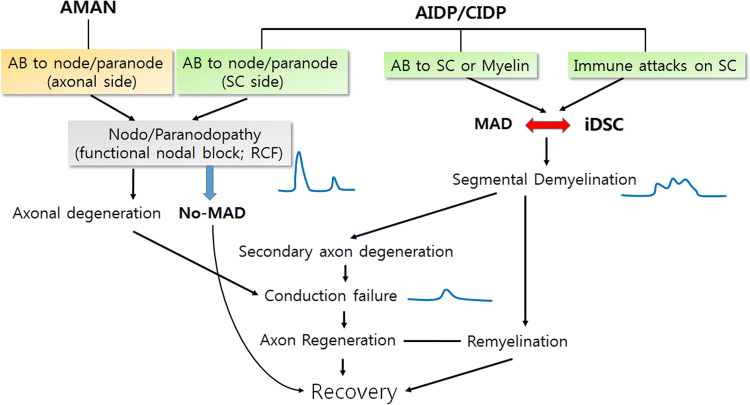Fig. 4.
Clinical implication of inflammatory demyelinating Schwann cells (iDSC) with special references to paranodal and segmental demyelination. Segmental demyelination, which shows slowed conduction velocity and temporal spreading in electrophysiology, depends on the cooperative interaction of macrophage-associated demyelination (MAD) and iDSC. Specific antibodies to nodal/paranodal proteins are associated with paranodal demyelination (nodo/paranodopathy), and it is characterized by reversible conduction failure (RCF) in electrophysiology without MAD-iDSC interaction in pathomechanism. Even though paranodal demyelination is not sufficient for eliciting segmental demyelination, iDSC may provide a turning point of paranodal demyelination becoming segmental demyelination

